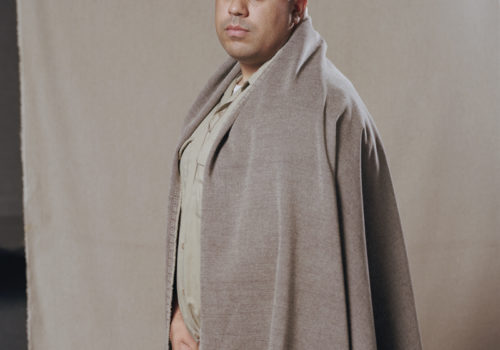Roles, actors, stages, scripts … a glance at the imagery of these terms reveals society as a theatre. We are all actors playing different cultural, social and biological roles. According to Erving Goffman (“The Presentation of Self in Everday Life“), life is a theatre in which we all perform different roles in order to fulfil social norms and expectations and present our own “self”. While society depends on a smooth coordination of actors and roles and “spoilsports”are marginalized, subjected to therapy, locked up or locked out, art deals with problematic areas of friction and breaking points between roles and actors. It reflects our desire to look behind the mask, where we seem to expect “authentic” persons.
This is the first exhibition –featuring photographs, graphics, videos and installations – that gives acomprehensive survey of the phenomenon of role playing as a theme of art, from paraphrased Tableaux vivants of the 19th century to role-playing games in internetbased social networks. In order to do justice to the historicity and heterogeneity of role-playing, the exhibition subdivides this phenomenon into thematic fields.
Problems and concepts of identity were central themes of contemporary art of the 1990s and were addressed in various exhibitions, which frequently focused on concepts of female identity. What has happened since the debate of the 1990s? In which way has our role understanding been influenced by the media? In the 1998 movie The Truman Show the protagonist is completely unaware that he is monitored by 5,000 cameras 24 hours a day, seven days a week, while “everyday life”is simulated with gigantic effort. At that time filmmakers were still able to present this as a dark vision of the future. The reality show Big Brother, which was first broadcast in 2000, has radically changed the distinction between private and public role.
Since the 1968 generation’s demand for spontaneity and authenticity has been unmasked as paradox, we can find a playful approach to roles and an effortless switching between them today. People assume virtual identities in their “Second Life”and in internet forums.
Repetitions and duplication are of central importance for role-playing. In the field of art this results in a special punchline, as the role is emphasized by the repetition of an iconographic model or a specific work of art and self-presentation is unmasked as re-enactment. The exhibition presents a survey on the subject of role models and role-playing, according to specific thematic guidelines:
19th century role-playing, religious role-playing (Passion of Christ, the Last Supper, other biblical scenes), paraphrases of works of art, concepts of identity (reflections on the role of artists, artists as works of art, gender roles and stereotypes, travesty, multiplication and repetition, ethnic identity, I is another) Theatricality, Fiction and Fantasy, private and public roles (socialisation, social class and profession), serious games (re-enactment, role-playing as therapy and political instrument).
Role Models – Role Playing
Until October 30, 2011
Museum der Moderne Mönchsberg
Mönchsberg 32
5020 Salzburg
+43.662.84.22.20-401
















